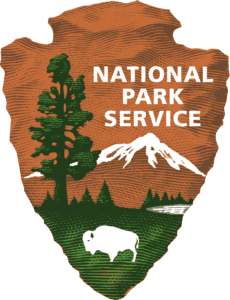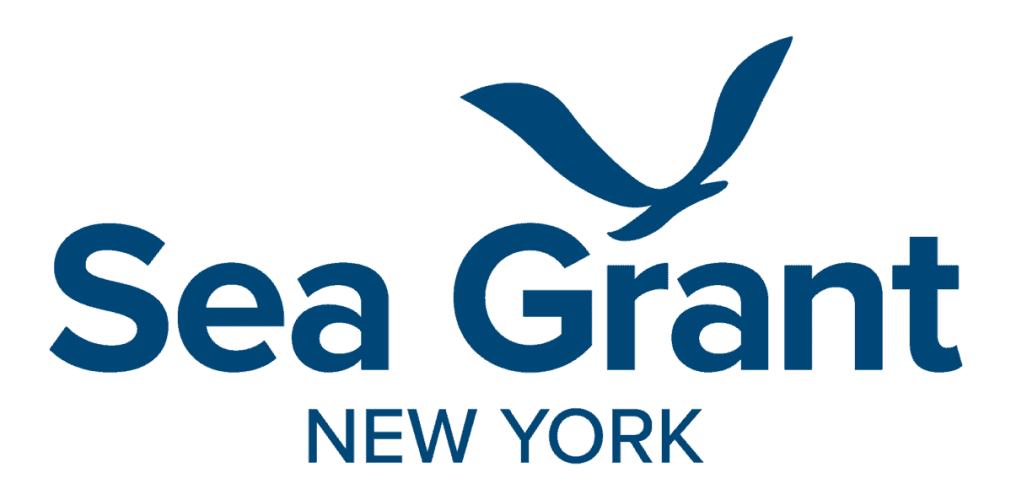A Network for Real-time Urban Flood Monitoring and Community Resilience
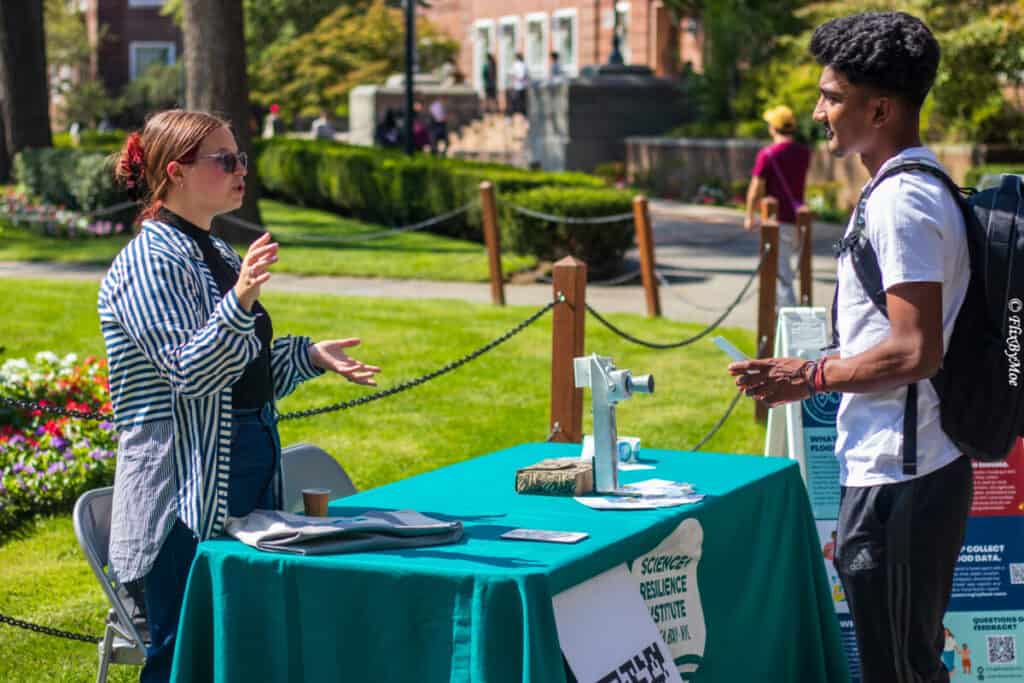
FloodNet began in 2020 as a partnership between academic researchers at NYU and CUNY, and NYC agencies, including Mayor’s Office of Climate & Environmental Justice, NYC DEP, NYC Office of Technology & Innovation. Our mission is to develop tools for real-time urban flood monitoring, implement these tools to measure flooding in New York City, and make flood data and monitoring tools available in a manner that is accessible and useful to stakeholders including residents, community-based organizations, government agencies, and researchers.
The FloodNet team is now composed of researchers and practitioners at New York University, the City University of New York, and New York City government agencies working in collaboration with stakeholders to collect and share data that contribute toward flood risk mitigation and building community flood resilience.
The Flood Sensors
FloodNet sensors provide real-time information about flooding, including the presence, frequency, and depth of hyperlocal street-level flood events. The sensors use ultrasonic technology to collect depth measurements every one minute and transmit the measurements wirelessly to our servers. Flood data is publicly accessible, and displayed on the FloodNet data dashboard in real-time. The sensors operate independently of existing power and networking infrastructure. The information collected by the sensors can help residents make critical decisions during events such as which streets are safe to use, and whether or not their home will be impacted by flooding.
We have a mandate from NYC Department of Environmental Protection, our funding organization, to install 500 flood sensors across NYC, and we are in the process of significantly accelerating our project timeline. To facilitate this acceleration, we are working to gather insight from stakeholders across the city about where flood sensors are needed most. If you would like to recommend neighborhoods for FloodNet sensor installation, please submit them using the sensor suggestion form below.
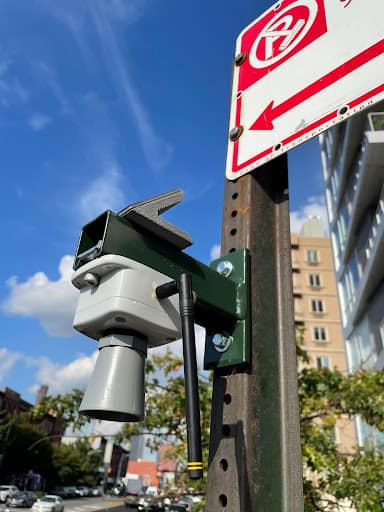
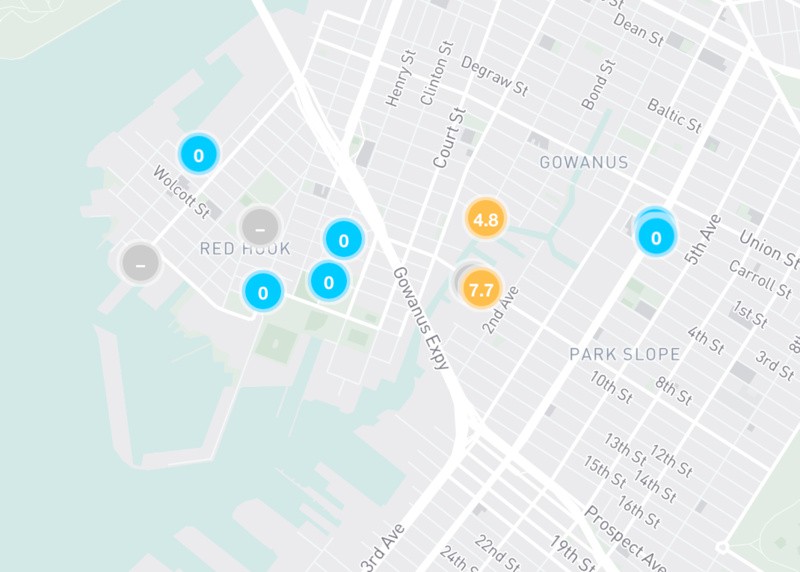
The Data Dashboard
All FloodNet sensor data can be viewed publicly on our data dashboard. The dashboard landing page illustrates where all FloodNet sensors are located, as well as the values of the depth measurements each sensor is taking in real time. Users can click on a sensor icon to view data from that sensor over time. There is also a ‘List’ view, accessible from the dashboard landing page, where users can scroll to view recent data from all flood sensors. List view is a useful tool for identifying locations that have flooded in the 48 hours following a flood event.
Community Engagement & Community Resources
We are consistently searching to build deeper relationships with communities across the city through presentations, community meetings, workshops, community walkthroughs, community feedback on the project and sensor placement, as well as other community-building efforts. If you or someone you know is interested in contributing to the FloodNet project, you can visit our website, floodnet.nyc, or email us at info@floodnet.nyc.
If you’re interested in volunteering, we are always looking for help documenting flooding in NYC. Help our partners at the NYC Community Flood Watch Project track where flooding happens by submitting photos to the MyCoast NY website or mobile app. Your photos will educate residents, researchers, and government agencies about where flooding occurs—and what it looks like on the ground—to help everyone prepare for future flood events.
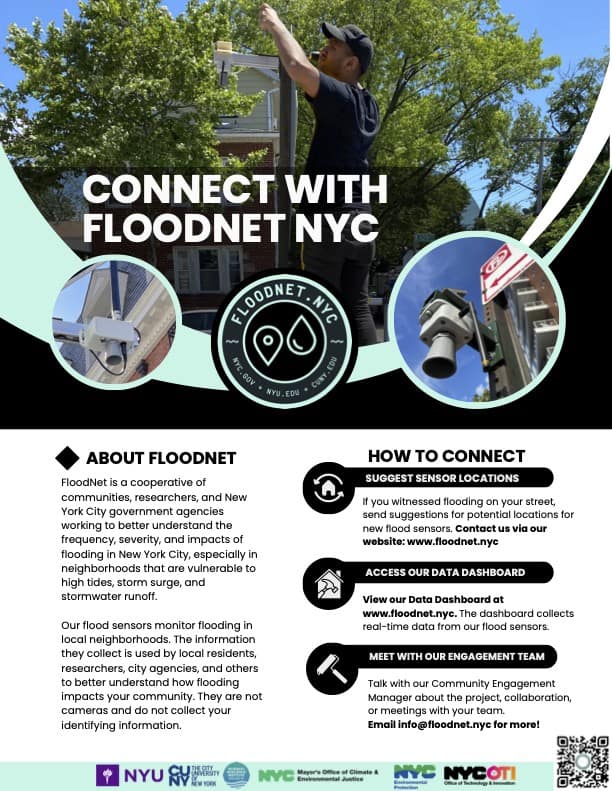
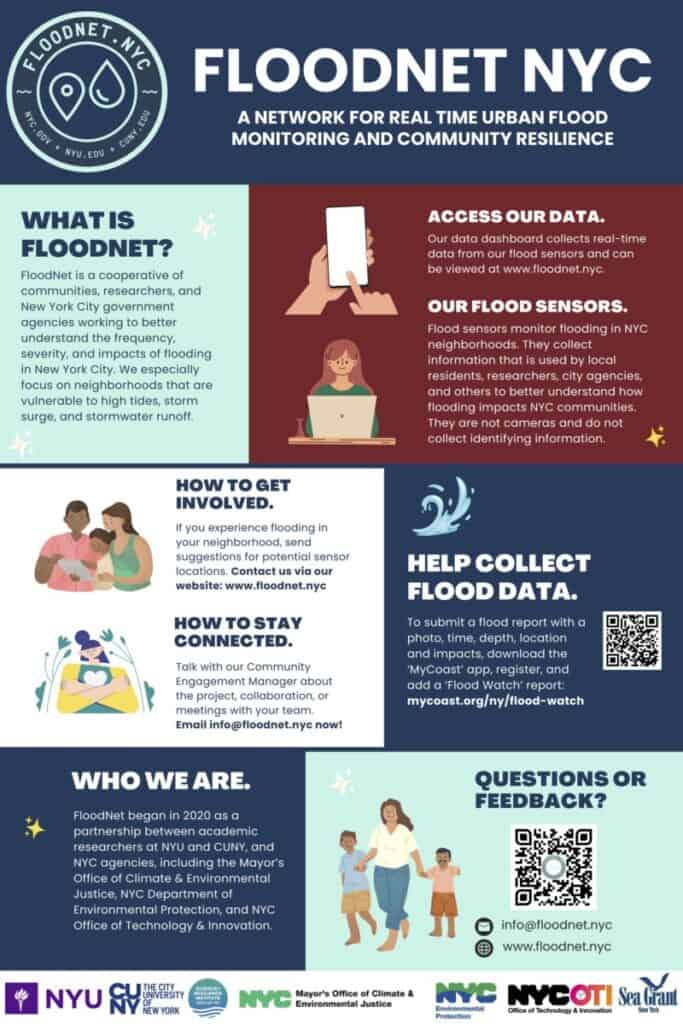
Blogs Related to Jamaica Bay:

SRIJB adds PhD student Georgie Efegenia Humphries to the team
The Science and Resilience Institute at Jamaica Bay is expanding again to meet the growing challenges the estuary faces in a changing climate. SRIJB would

SRIJB Welcomes Polly Pierone & Véronëque Ignace
As NYC faces growing threats from sea level rise, the Science and Resilience Institute at Jamaica Bay is expanding its FloodNet team. FloodNet is a

SRIJB Welcomes Dr. Jonathan Hallemeier
The Science and Resilience Institute at Jamaica Bay is thrilled to be hosting Dr. Jonathan Hallemeier, a visiting scholar at Brooklyn College who is an
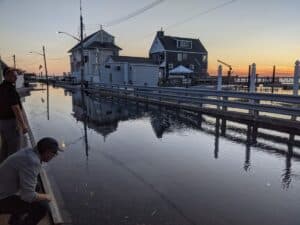
Summary of the Intergovernmental Panel on Climate Change’s Climate Change 2022 Report
The latest report by the Intergovernmental Panel on Climate Change (IPCC), released March 2022, is a clarion call for cities, states and nations to move swiftly
SRIJB adds PhD student Georgie Efegenia Humphries to the team
The Science and Resilience Institute at Jamaica Bay is expanding again to meet the growing challenges the estuary faces in a changing climate. SRIJB would
SRIJB Welcomes Polly Pierone & Véronëque Ignace
As NYC faces growing threats from sea level rise, the Science and Resilience Institute at Jamaica Bay is expanding its FloodNet team. FloodNet is a
SRIJB Welcomes Dr. Jonathan Hallemeier
The Science and Resilience Institute at Jamaica Bay is thrilled to be hosting Dr. Jonathan Hallemeier, a visiting scholar at Brooklyn College who is an
Summary of the Intergovernmental Panel on Climate Change’s Climate Change 2022 Report
The latest report by the Intergovernmental Panel on Climate Change (IPCC), released March 2022, is a clarion call for cities, states and nations to move swiftly



